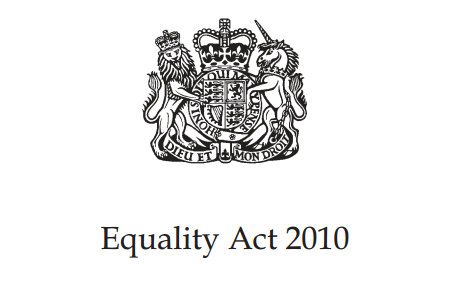The Act clearly defines the various types of discrimination, including direct and indirect forms, and other prohibited conduct such as victimisation and harassment, offering a basic framework of protection against the range of discrimination that can take place.
The Equality Act 2010 is a vital reference for employers and employees alike.
Who does the Act protect?
The Act defines protected characteristics, which must not be discriminated against:
- Age
- Marital status
- Pregnancy and maternity
- Having a disability
- Race (including colour, nationality, ethnic or national origin)
- Religion or belief (as practising one or having no religion)
- Sex
- Sexual orientation
- Gender reassignment.
The Act also specifies that individuals can be protected from this discrimination at work, in education, as a consumer, when using public services, when buying or renting property or as a member or guest of a private club or association.
How can businesses and managers comply?
All employers have a duty to avoid unlawful discrimination and must ensure they do not discriminate against a person in any situation such as:
- When recruiting someone to work for them
- Working hours and conditions
- Pay and benefits
- Career development
- Managing people
- Dismissal, redundancy and retirement
Additionally, employers have a duty to make reasonable adjustments to ensure a person with a disability is not disadvantaged.
The Act recognises that discrimination is not always intentional. Whilst businesses may abide by the regulations outlined in the Act, they can sometimes fail to foresee the potential for discrimination or fully understand its effects.
Guidance is available to advise employers on how to avoid discrimination when recruiting, for example:
- Employers must not make any discriminatory statements in job adverts
- Employers must only outline qualifications and experience that are fundamentally necessary to complete the job in order to offer equal opportunities to all applicants.
- Employers must not inquire about applicants’ characteristics unless it is to positively encourage applicants or inquire about adjustments which can be made to accommodate the applicant.
- Employers should publicise job openings in a variety of locations so that a diverse pool of applicants can have the opportunity to apply.
- Employers must make adjustments to enable people to apply or undertake the job, e.g. offer application forms or tests in different formats (e.g. Braille, audio).
- Employers must also consider the accessibility of the workplace and ensure that it is accessible.
Similarly, companies bidding for contracts should outline how they continue to comply with the Act beyond recruitment:
- Responding to complaints and whistleblowing – employers must take appropriate action and respond quickly to any reports or complaints of discrimination (e.g. employment tribunals). Employers are responsible for discrimination by other employees unless they can demonstrate that they have taken all possible action to prevent it. Communicating your whistleblowing policy will help to demonstrate that you encourage employees to report concerns and take them seriously.
- Ensuring equality in terms and conditions – employers must offer equal pay, terms and conditions, promotion, transfer opportunities, training, dismissal and redundancy procedures to all employees.
When answering questions around equality and diversity, bidders should demonstrate that they understand and apply the legislation, for example:
- Adding a statement to job adverts emphasising that you value diversity and welcome applications from everyone
- If applicable, mention that you consider flexible working arrangements or have initiatives to support new employees
- Share your equality policy, to communicate your vision.
How can tenderers demonstrate their commitment to equality and diversity?
While it is standard for selection questionnaires to ask whether any finding of unlawful discrimination has been made against the organisation, many tenders also include questions asking how the tendering organisation ensures equality, for example:
Provide examples of how your organisation will deliver the services free from any form of discrimination.
In connection with equality and diversity what action do you take to conform to current UK legislation and promote equality and diversity in connection with race, caste, national origin, religion, age, disability, gender, marital status, sexual orientation, union membership and political affiliation?
How do you demonstrate compliance with the public sector equality duty with your staff?
What action does your company take to prevent bullying and harassment in the workplace?
A strong tender will not merely ‘tick the box’, but show how diversity is valued and championed, and how the employer exceeds their statutory duties.
For example, the tenderer may outline how they create a culture of ‘positive action’ – i.e. how they encourage people with protected characteristics to apply for jobs. The positive action could include:
- Monitoring characteristics of your workforce to identify under-representation compared to the local population
- Undertaking targeted recruitment to attract under-represented groups, for example translating job adverts into Polish or Urdu in an area with a high proportion of people for whom that is their first language or holding open days to publicise opportunities
- Implementing initiatives such as additional training to support people with protected characteristics entering the workforce
- Offering childcare facilities or vouchers
- Providing initiatives in the community to help people develop skills for employment.
As with all topics within a tender document, bidders should remember that the process is a competition. Meeting the requirements is only the first step; at every stage bidders should be asking themselves “what more can I do to champion diversity?” and “how can I really compete to win this contract?”
